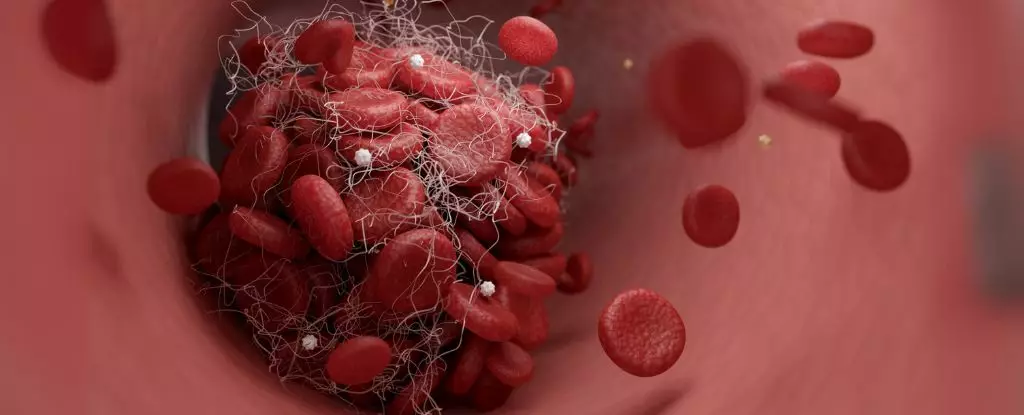The threat of stroke looms larger than most people realize, quietly wreaking havoc on lives and communities. Statistically, stroke is not just an old person’s problem; it now casts a dark shadow over individuals as young as 30. As someone who transitioned from the demanding world of nursing in neurocritical care to stroke research, I’ve seen firsthand the catastrophic consequences stroke can have—not just on those affected, but equally devastating on their loved ones. Knowing the reality of strokes and their preventability is not just a whispered caution—it’s a clarion call for shift in public health priorities.
The Alarming Rise Among Youth
Most often associated with the elderly, the surge in stroke occurrences among individuals under 55 is not just alarming; it’s scandalous given the preventative measures within our grasp. This misperception exacerbates a lack of awareness surrounding stroke risks, leading to an underestimation of lifestyle changes necessary to shield against such an occurrence. In a climate where knowledge about stroke risk factors is palpably poor, individuals—especially the young—are neglecting their health in unfathomable ways. Ignoring this urgent public health crisis is not only negligent but borders on cruelty, as it associates strokes with aging, erasing the reality that they can strike anyone.
Unstoppable Factors vs. Modifiable Risks
When dissecting the causes of stroke, it’s crucial to understand the dichotomy between unalterable factors, like genetics and gender, and lifestyle-related risks. While some individuals are inevitably predisposed due to age, ethnicity, or family history, a significant portion of stroke risk boils down to lifestyle choices which can be modified. How disheartening that the prevalence of smoking, binge drinking, poor diets, and lack of physical exercise tend to grip those from socioeconomic backgrounds that already saddle them with harsher life challenges. It’s a societal failing when the most vulnerable are also the most likely to suffer such fates—an issue that demands urgent redress rather than apathy.
To Quit or Not to Quit – The Smoking Dilemma
Let’s confront the elephant in the room: smoking is the juggernaut of disease. Smokers are more than twice as likely to suffer a stroke, and each puff is akin to rolling the dice with your health. The need for public policy to enhance smoking cessation programs cannot be overstated. We need to foster an environment that encourages lifestyle changes at every opportunity. We’re talking about launching aggressive educational campaigns focusing on the dangers of cigarettes, especially targetting younger populations. Implementing a national outreach initiative could change the narrative surrounding smoking once and for all.
How Many “Unhealthy” Choices Are You Making?
Alongside smoking, other elements contribute to stroke risk. High blood pressure, elevated cholesterol levels, and obesity often stretch beyond biological limitations into our societal fabric. The reality is that we face a public health emergency that cannot be relegated to mere statistics; it’s our duty to confront this issue head-on, holding ourselves and our healthcare system accountable. The shocking correlation between socioeconomic status and access to quality healthcare is a travesty. Improving health literacy in these communities must become a non-negotiable priority if we hope to see meaningful change.
Carrying the Weight of Health
Consider the numbers: nearly 20% of strokes are linked to obesity. Obesity isn’t just a personal struggle; it’s a community issue fueled by environmental factors. Elevated body weight isn’t merely a cosmetic concern; it’s a signal of deeper issues rooted in lifestyle habits influenced by society at large. Tackling obesity crisis calls for comprehensive strategies—better access to healthy food, creating safe spaces for exercise, and dismantling the stigmas associated with being overweight. Local and national governments must prioritize these initiatives to save lives that hang precariously in the balance.
The Mediterranean Magic and the Sleep Puzzle
Interestingly, the Mediterranean diet emerges as a bastion of hope in combating stroke risk. Those embracing its principles are not only eating well but also cultivating lifelong habits that promote health. We need to advocate this approach as a public health strategy, working to make ingredients like olive oil, nuts, and fresh produce accessible to everyone. Similarly, the science linking sleep to stroke risk is invaluable; stress and sleep deprivation have become routine woes that compound our health challenges. Encouraging healthier sleeping habits among the public could yield drastic reductions in stroke risk.
Engagement and Movement: A Call to Action
Staying active isn’t just a recommendation; it’s an ultimatum in our battle against stroke. Society must innovate ways to inspire its members toward fitness. The NHS’ guideline of 150 minutes of moderate-intensity activity weekly shouldn’t just be a suggestion; it must be a mandate! Communities need inclusive programs offering easily accessible physical activities for people from every background, transforming notions of health into shared, communal responsibilities that foster stronger connections and wellbeing.
Each of these strokes of brilliance comes together to form an actionable roadmap towards a healthier future. When we take personal responsibility seriously, coupled with collective action, we position ourselves uniquely to reduce the threat of strokes. Tackling such an epidemic requires unyielding commitment—let’s make it happen.


Leave a Reply